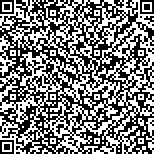罗慧,王强,赵娟,等.脊柱手法治疗对慢性非特异性颈痛的影响[J].中华物理医学与康复杂志,2021,43(5):422-426
扫码阅读全文

|
| 脊柱手法治疗对慢性非特异性颈痛的影响 |
|
| |
| DOI:10.3760/cma.j.issn.0254-1424.2021.05.010 |
| 中文关键词: 脊柱手法治疗 慢性非特异性颈痛 表面肌电图 视觉模拟评分 颈椎功能障碍指数 |
| 英文关键词: Spinal manipulation Neck pain Surface electromyography Neck disability index |
| 基金项目: |
|
| 摘要点击次数: 5688 |
| 全文下载次数: 6911 |
| 中文摘要: |
| 目的 观察脊柱手法治疗对慢性非特异性颈痛的影响。 方法 选取慢性非特异性颈痛患者30例,按照随机数字表法将其分为观察组(15例)和对照组(15例)。观察组患者给予脊柱手法治疗,每次20 min,每周2次,共2周;对照组患者给予常规颈痛治疗方案(中频和高频电疗法),每次治疗时间40 min,每周4次,共2周。治疗前、治疗结束后、治疗后1个月、治疗后3个月,对2组患者采用视觉模拟评分(VAS)、颈椎功能障碍指数评分(NDI)进行评估。治疗前及治疗结束后,记录2组患者的颈椎屈伸活动度和竖脊肌、斜方肌上束的振幅均方根值(RMS)及中位频率(MF)。 结果 治疗前,2组患者VAS、NDI、颈椎活动度、竖脊肌及斜方肌上束肌电值比较,差异无统计学意义(P>0.05)。治疗2周后、治疗后1个月、治疗后3个月,2组患者VAS、NDI及颈椎活动度均较组内治疗前改善(P<0.05),且优于对照组(P<0.05)。2组患者治疗2周后竖脊肌及斜方肌上束RMS、MF均较组内治疗前改善,且观察组竖脊肌RMS[(24.07±5.86)μV]、MF[(78.87±8.03)Hz]及斜方肌上束RMS[(27.67±3.72)μV]、MF[(75.73±7.42)Hz]改善较为优异(P<0.05)。 结论 脊柱手法治疗能有效改善慢性非特异性颈痛患者的颈部肌群肌力,提高肌肉抗疲劳能力。 |
| 英文摘要: |
| Objective To observe the clinical effect of spinal manipulation on chronic, non-specific neck pain. Methods Thirty patients with chronic, nonspecific neck pain were divided randomly into an observation group (n=15) and a control group (n=15). Patients in the observation group were given 20 minutes of a novel 4R spinal manipulation (resetting joint malalignment, resetting abnormal muscle, resetting joint stabiliazation, resetting sensorimotor control) twice a week for 2 weeks while the control group were given 20 minutes of medium frequency and high frequency conventional physiotherapy 4 times a week, also for 2 weeks. Before the treatment, right after, and one and three months later, both groups were evaluated using a visual analogue scale (VAS) and a neck disability index (NDI). Right before and after the treatment, cervical flexion and extension range of motion (ROM) were measured. The surface electromyography was employed to record the root mean square (RMS) of the EMG amplitude and the median frequency (MF) from the erector spinae and upper trapezius. Results Before the treatment no significant differences were found in any of the measurements between the two groups. Afterward and one and three months later the average VAS, NDI and cervical ROM results of both groups had improved significantly, with the improvements in the observation group significantly greater than those in the control group on average. After 2 weeks of treatment, the average RMS and MF values had improved in both groups, again with the observation group′s average values significantly better than those of the control group. Conclusion Spinal manipulation can effectively improve the strength and stamina of cervical muscle groups in patients with chronic, non-specific neck pain. |
|
查看全文
查看/发表评论 下载PDF阅读器 |
| 关闭 |
|
|
|